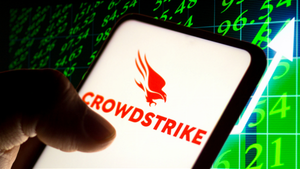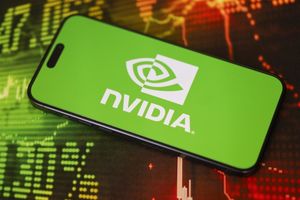
As of late October 2025, the technology sector finds itself at a critical juncture, navigating a landscape of unprecedented innovation driven by Artificial Intelligence (AI) and a palpable sense of market unease. While recent earnings reports from tech behemoths reveal robust top-line growth, largely propelled by aggressive AI investments, a growing chorus of analysts and investors are questioning the sustainability of current valuations. This volatility stems from a complex interplay of massive capital expenditures in AI infrastructure, the elusive timeline for monetizing these investments, and a market sentiment increasingly wary of an "AI bubble" reminiscent of past speculative frenzies.
The ongoing "AI Gold Rush" has undeniably reshaped the financial markets, propelling the S&P 500 to repeated record highs and elevating AI-related stocks to a significant portion of its market capitalization. However, this optimism is tempered by a cautious outlook as companies pour billions into AI development without a clear, immediate path to profitability from these specific ventures. The market is keenly watching whether this era of intense investment will ultimately yield substantial returns or if the current exuberance has pushed valuations beyond a justifiable threshold, setting the stage for potential corrections.
The AI Arms Race: Billions Poured into an Uncertain Future
The current volatility in the technology sector is deeply rooted in an intense "AI infrastructure arms race" that has seen the world's largest tech companies commit staggering sums to dominate the burgeoning AI landscape. This race is less about immediate profit and more about securing future competitive advantage, leading to a dynamic where capital expenditures are soaring, even as the direct financial returns from AI are still largely in their nascent stages.
Recent Q3 2025 earnings reports have laid bare this trend. Microsoft (NASDAQ: MSFT) saw an 18% revenue jump, but investor concerns over its nearly $35 billion spent on AI infrastructure in the quarter led to a 4% stock dip. Similarly, Alphabet (NASDAQ: GOOGL), which surpassed $100 billion in quarterly revenue for the first time, increased its 2025 capital expenditure guidance to approximately $85 billion, largely for AI-driven cloud services. Meta Platforms (NASDAQ: META) also reported strong growth but faced a stock slide after boosting its fiscal 2025 capital expenditure guidance to between $70 billion and $72 billion, again primarily for AI. Even Amazon (NASDAQ: AMZN), expected to report Q3 2025 earnings on October 30, 2025, is projected to spend as much as $100 billion in 2025 on AI, mainly for data centers. These figures highlight an industry-wide commitment to AI that is unprecedented in scale, yet the market's initial reaction has often been one of apprehension, signaling a demand for clearer visibility on the return on investment for these colossal outlays.
The timeline of events leading to this moment has been swift and dramatic. The generative AI boom, ignited in late 2022, rapidly accelerated through 2023 and 2024, culminating in 2025 becoming the year of aggressive AI infrastructure build-out. Key players like Nvidia (NASDAQ: NVDA), which recently became the first company to reach $5 trillion in market value thanks to its dominant position in AI chips, are at the epicenter of this shift. Other significant stakeholders include cloud providers (Microsoft Azure, Google Cloud, Amazon Web Services), AI model developers (OpenAI), and enterprise software companies integrating AI into their offerings. Initial market reactions have been a mix of euphoria and caution; while AI-related stocks have seen meteoric rises, recent earnings calls have often been met with selling pressure when capital expenditure projections are higher than anticipated, reflecting investor anxiety about the immediate impact on profitability.
The AI Divide: Winners and Losers in a Volatile Market
The intense focus on AI is creating a clear divide within the technology sector, producing both significant winners and potential losers as companies adapt to the new paradigm of innovation and investment. The ability to effectively leverage AI, manage massive capital outlays, and demonstrate a clear path to monetization will determine market leadership in the coming years.
Unsurprisingly, Nvidia (NASDAQ: NVDA) stands as the undisputed champion of the AI era, having reached an unprecedented $5 trillion market capitalization. Its H100 and Blackwell processors are the foundational hardware for large-language models, making it indispensable to every major AI player. This dominance is expected to continue, as global semiconductor spending, particularly for AI-critical memory and logic chips, is projected to reach $185 billion in 2025. Other beneficiaries include major cloud providers like Microsoft (NASDAQ: MSFT), Alphabet (NASDAQ: GOOGL), and Amazon (NASDAQ: AMZN). Despite the investor jitters over their AI capital expenditures, these companies are building the foundational infrastructure that will power the AI revolution, positioning them for long-term growth as AI adoption expands across industries. Their ability to offer AI-as-a-service through their cloud platforms ensures a continuous revenue stream from the broader AI ecosystem.
On the other hand, companies struggling to integrate AI effectively or those with less robust balance sheets to fund the necessary infrastructure investments could face significant headwinds. Smaller tech firms or those reliant on legacy technologies may find it challenging to compete with the AI capabilities offered by the tech giants. Even some AI-focused companies, despite strong revenue growth, are under scrutiny due to their valuations. Palantir (NYSE: PLTR), for instance, delivered landmark Q2 2025 revenue, driven by its Artificial Intelligence Platform (AIP), but its forward price-to-earnings (P/E) ratio of 231x and price-to-sales (P/S) of 83x have led analysts to maintain a cautious stance, highlighting the market's sensitivity to stretched valuations even for high-growth AI players. The pressure is on for all companies to not just invest in AI, but to demonstrate tangible, profitable applications.
Broader Implications: Reshaping Industries and Regulatory Landscapes
The current volatility and the AI-driven transformation within the technology sector extend far beyond individual company balance sheets, carrying profound implications for broader industry trends, regulatory frameworks, and the global economic landscape. This event is not merely a market fluctuation; it represents a fundamental re-architecting of how technology is developed, deployed, and monetized.
The "AI Gold Rush" is accelerating a broader industry trend towards data-centric operations and intelligent automation. Companies across all sectors are now compelled to consider their AI strategy, leading to a projected 9.3% growth in global IT spending for 2025, with data center and software segments seeing double-digit increases. This creates ripple effects, boosting demand for specialized hardware, software tools, and skilled AI talent. Competitors are forced to innovate or risk obsolescence, while partners in the AI supply chain, from chip manufacturers to data providers, are seeing unprecedented demand. The concentration of AI deals and infrastructure build-outs among a few dominant players also raises concerns about market power and potential monopolistic tendencies, which could invite increased scrutiny.
Regulatory bodies are already grappling with the ethical, societal, and economic implications of widespread AI adoption. Discussions around data privacy, algorithmic bias, intellectual property rights, and the potential impact on employment are intensifying. Governments worldwide are exploring new policies and regulations to govern AI development and deployment, which could introduce new compliance costs and operational constraints for tech companies. Historically, periods of rapid technological advancement, such as the dot-com bubble of the late 1990s, have been characterized by similar speculative fervor and subsequent market corrections. While the underlying technology and market conditions are different, the current debate about an "AI bubble" draws parallels to past instances where valuations outpaced tangible profitability, serving as a cautionary tale. The question remains whether this time is truly different, given the transformative potential of AI.
The Road Ahead: Navigating a Transformative Era
As the technology sector grapples with its current volatility and the immense potential of AI, the road ahead presents a complex mix of short-term challenges and long-term opportunities. The coming months will be crucial in determining the trajectory of AI investments, market sentiment, and ultimately, the sustainability of current valuations.
In the short term, investors will be closely watching for clearer signals on the return on investment from the massive AI capital expenditures. Companies will need to demonstrate not just technological prowess but also tangible revenue growth, higher margins, or increased adoption rates directly attributable to their AI initiatives. This could lead to strategic pivots, with some companies potentially re-evaluating the scale or pace of their AI spending if profitability remains elusive. The market may also see increased consolidation as smaller players struggle to keep pace with the infrastructure demands of AI, or as larger entities acquire innovative AI startups. Further interest rate decisions by the Federal Reserve, which made a cut in September 2025 and is anticipated to make two more by year-end, could also influence market liquidity and investor appetite for risk, potentially impacting tech stock performance.
Looking further ahead, the long-term possibilities are immense. AI is poised to drive productivity gains, create entirely new industries, and revolutionize existing ones. This presents significant market opportunities for companies that can successfully integrate AI into their core operations and develop innovative AI-powered products and services. The ongoing "trillion-dollar race for dominance" in semiconductor markets underscores the foundational shift AI is bringing. However, challenges such as managing the ethical implications of AI, securing talent, and navigating evolving regulatory landscapes will also be paramount. Potential scenarios range from a sustained, albeit volatile, growth period driven by genuine AI-fueled innovation, to a more significant market correction if the promised returns from AI fail to materialize at a pace that justifies current valuations. The market will demand increasing transparency and concrete evidence of AI's transformative power beyond just cost accumulation.
Navigating the AI Frontier: A Market in Flux
The current climate within the technology sector is one of profound transformation, underscored by significant volatility as the market attempts to reconcile the immense potential of Artificial Intelligence with the practicalities of its implementation and monetization. The key takeaway from recent developments is a clear shift in investor focus: from pure AI hype to a demand for demonstrable financial returns on the colossal investments being made.
Moving forward, the market will remain highly sensitive to earnings reports, particularly the capital expenditure guidance and any commentary on AI-driven revenue streams. Companies that can articulate a clear strategy for monetizing their AI investments and show early signs of profitability will likely be rewarded, while those that continue to accumulate costs without a clear path to return may face further scrutiny and valuation adjustments. The debate over whether the tech sector is in an "AI bubble" will persist, but increasingly, the market will differentiate between genuine, value-creating AI applications and speculative ventures.
Investors should closely watch for several indicators in the coming months: the actual impact of AI on corporate profit margins, not just revenue growth; further developments in AI regulation globally; and any shifts in capital expenditure guidance from major tech players. The resilience of the semiconductor industry, driven by AI chip demand, will also be a key barometer. While the long-term trajectory for AI remains overwhelmingly positive, the immediate future for the tech sector will be characterized by a discerning market, demanding more than just promises as it navigates this transformative era.
This content is intended for informational purposes only and is not financial advice





